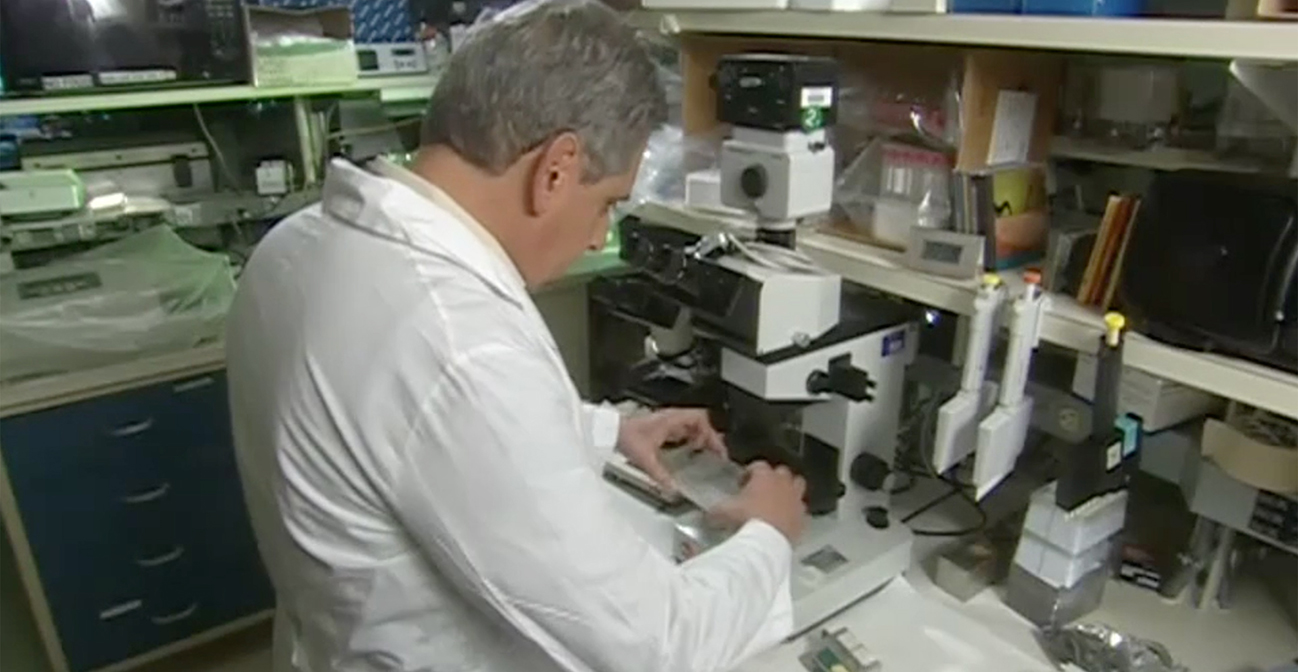Join us for conversations that inspire, recognize, and encourage innovation and best practices in the education profession.
Available on Apple Podcasts, Spotify, Google Podcasts, and more.

HIV and AIDS have emerged as an epidemic of staggering proportions, and one of today’s greatest challenges to scientists and health workers. This unit provides an overview of the human immune system and viral life cycle: and explores recent developments in the study of HIV and AIDS, the future global impact of the current infection levels, and the ethical issues surrounding current research and treatments.
ONLINE TEXTBOOK
The online textbook chapters support and extend the content of each video. The Web version can be viewed as a full chapter or as individual sub-sections, and includes links to glossary terms and other related material.
ANIMATIONS & IMAGES
Explore the archive of animations, images and figures from the videos and online textbook. All of the images can be viewed online or downloaded as jpg files.
EXPERT INTERVIEW TRANSCRIPTS
Read profiles of the expert scientists featured in the video and find the complete transcripts of the interviews conducted for this unit.
Edward A. Berger, Ph.D.
Laurie Garret, Journalist
Jay Levy, M.D.
Erik von Muller
David Weiner, Ph.D.
Introduction
The Immune System
The Central Role of Helper T Cells
The Structure and Life Cycle of HIV
Progression of HIV Infection
Treatments Based on Understanding the Viral Life Cycle
The Challenges of Vaccine Development
Social Obstacles to Controlling HIV
Antigen
A substance, often a protein or large polysaccharide, which is perceived as foreign by the body and stimulates an immune response. Components of microbes–such as cell walls, flagella, toxins, and the coats of viruses–can serve as antigens.
CD4
A protein on the surface of certain leukocytes. Helper T cells are among the cell types that possess CD4. CD4 is involved in the binding of HIV to its host cells.
Cellular Immunity
The arm of the immune system directed toward antigens associated with cells, such as those expressed by virally infected cells or cancers. The T cells of cellular immunity respond specifically to such antigens.
Book
Garrett, L. 1994. The coming plague – Newly emerging diseases in a world out of balance. New York: Penguin Books.
![]() A detailed book that provides insights into emerging infection through the stories of those intimately involved in a plethora of outbreaks worldwide.
A detailed book that provides insights into emerging infection through the stories of those intimately involved in a plethora of outbreaks worldwide.
Articles
Amborzia, J., and J. A. Levy. 1998. Epidemiology, natural history and pathogenesis of HIV infection. In Sexually Transmitted Diseases, 3d ed, ed. K.K. Holmes, P.F. Sparling, P.A. Mardh, S.M. Lemon, W.E. Stamm, P. Piot, and J.N. Wasserheit, 251–58. New York: McGraw-Hill.
![]() A review of the transmission and clinical manifestations of HIV infection.
A review of the transmission and clinical manifestations of HIV infection.
Cimmons, M. 2002. New prospects on the HIV vaccine scene. ASM News68(1):19-22.
![]() An update from the American Society of Microbiology.
An update from the American Society of Microbiology.
Cohen, J. 2002. Confronting the limits of success. Science 296:2320,
2320.
![]() Discusses the successes and challenges regarding HAART (highly active antiretroviral therapy).
Discusses the successes and challenges regarding HAART (highly active antiretroviral therapy).
Cohen, J. 2002. The high cost of poverty. Science 296:2324.
![]() Puts AIDS in terms of dollars and cents.
Puts AIDS in terms of dollars and cents.
Ezzel, C. 2002. Hope in a vial. Scientific American, June, 38.
![]() An overview of the challenges developing HIV vaccines.
An overview of the challenges developing HIV vaccines.
Piot, P. 1998 The science of AIDS: A tale of two worlds. Science 280:1844-45.
![]() One of the essays on science and society presented in Science. The essays are directed to the educated lay reader, and can serve as the basis of discussion and debate in the classroom. This essay introduces the impact that policymakers and community members have on the progression of emerging diseases such as AIDS.
One of the essays on science and society presented in Science. The essays are directed to the educated lay reader, and can serve as the basis of discussion and debate in the classroom. This essay introduces the impact that policymakers and community members have on the progression of emerging diseases such as AIDS.